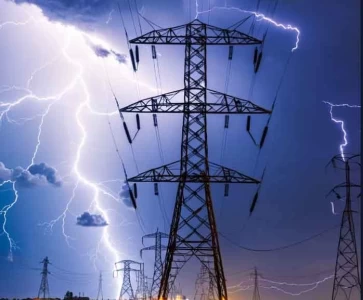Lightning Protection Systems
Mesh Conductor Systems: Modern Solutions for Lightning Protection on Complex Roof Structures
Lightning Protection in Safeguarding Power Grids
Lightning Protection Systems
Impact of Climate Change on Lightning Protection Strategies
Climate change is altering global weather patterns, leading to a potential increase in lightning activity. This phenomenon poses a significant challenge for existing lightning protection strategies and standards. This article explores how changing weather patterns and increased lightning intensity are impacting the design and implementation of lightning protection systems (LPS) for structures and infrastructure.
Visit Electrical Protection Study Course
Changing Weather Patterns and Lightning Activity
Climate change has been linked to more extreme weather conditions, including increased temperatures, altered precipitation patterns, and more volatile atmospheric conditions, all of which contribute to a higher frequency and intensity of lightning strikes.
Increased Lightning Frequency
Studies have shown that for every 1°C increase in global temperature, the frequency of lightning strikes can increase by approximately 12%. This heightened activity presents a growing challenge for existing lightning protection systems.
Intensified Lightning Intensity
Not only is lightning becoming more frequent, but it is also exhibiting greater intensity, with stronger electrical discharges. This trend necessitates robust protection systems capable of withstanding more severe lightning events.
Adapting Protection Strategies
The evolving nature of lightning due to climate change requires a dynamic approach to lightning protection, emphasizing adaptability and resilience.
Enhanced System Design
Lightning protection systems must...
Related Articles

Lightning Protection in Safeguarding Power Grids
Lightning protection is crucial for maintaining the integrity and functionality of critical infrastructure, particularly power grids and communication networks. These systems are vital for the socio-economic well-being of communities and the smooth operation of various sectors. This article...
Maintaining System Effectiveness: Inspection, Testing, and Upkeep
Lightning protection systems (LPS) play a critical role in safeguarding structures, equipment, and personnel from the damaging effects of lightning strikes. However, even the most well-designed LPS can lose its effectiveness if not properly maintained. Regular inspections, testing, and upkeep are...
Advancements in Lightning Rod Design: Early Streamer Emission (ESE) Technology
Lightning protection systems have evolved significantly, with Early Streamer Emission (ESE) technology emerging as a groundbreaking advancement in lightning rod design. ESE technology aims to proactively protect structures from lightning strikes by initiating an upward streamer earlier than...
Integration of Lightning Protection Systems with Building Management Systems
The integration of Lightning Protection Systems (LPS) with Building Management Systems (BMS) represents a significant technological advancement in electrical protection. This integration facilitates real-time monitoring and data acquisition, enhancing the ability to protect structures from...
Fire Prevention: Role of Lightning Protection in Mitigating Fire Risks
Lightning strikes pose a significant fire risk to buildings, structures, and natural areas, capable of igniting devastating fires within seconds. Lightning protection systems (LPS) play a crucial role in mitigating these risks by safely dissipating the electrical energy of a strike. This article...

Lightning Protection in Safeguarding Power Grids
Lightning protection is crucial for maintaining the integrity and functionality of critical infrastructure, particularly power grids and communication networks. These systems are vital for the socio-economic well-being of communities and the smooth operation of various sectors. This article...
Integration of Lightning Protection Systems with Building Management Systems
The integration of Lightning Protection Systems (LPS) with Building Management Systems (BMS) represents a significant technological advancement in electrical protection. This integration facilitates real-time monitoring and data acquisition, enhancing the ability to protect structures from...
Mesh Conductor Systems: Modern Solutions for Lightning Protection on Complex Roof Structures
Mesh conductor systems represent a significant advancement in the field of lightning protection, offering a modern solution for safeguarding buildings with complex roof geometries. This article explores the functionality, advantages, and considerations of mesh conductor systems, providing insight...
Advancements in Lightning Rod Design: Early Streamer Emission (ESE) Technology
Lightning protection systems have evolved significantly, with Early Streamer Emission (ESE) technology emerging as a groundbreaking advancement in lightning rod design. ESE technology aims to proactively protect structures from lightning strikes by initiating an upward streamer earlier than...
Maintaining System Effectiveness: Inspection, Testing, and Upkeep
Lightning protection systems (LPS) play a critical role in safeguarding structures, equipment, and personnel from the damaging effects of lightning strikes. However, even the most well-designed LPS can lose its effectiveness if not properly maintained. Regular inspections, testing, and upkeep are...
